“Dancing in the Moonlight” is a song that evokes feelings of joy, carefree nights, and the magic of moonlit gatherings. But the feel-good vibes of this classic track belie a deeply personal and even traumatic origin story. Sherman Kelly, the songwriter behind this iconic tune, reveals the unexpected inspiration drawn from a harrowing experience that transformed into a dream of “dancing in the moonlight.”
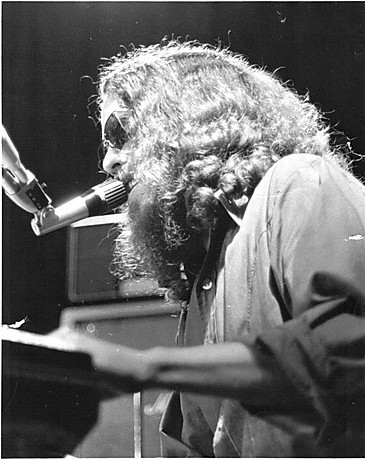 Alt text: Sherman Kelly performing on stage in the 1970s, highlighting his musical career and expertise.
Alt text: Sherman Kelly performing on stage in the 1970s, highlighting his musical career and expertise.
The story begins not under a romantic moon, but under the shadow of a canceled concert. Like many music enthusiasts, the author of the original article was anticipating a performance featuring Pure Prairie League, Poco, and Orleans. Orleans, of course, is known for their rendition of “Dancing in the Moonlight,” a song penned by Sherman Kelly. This anticipation led to a deep dive into YouTube videos and a surprising discovery: a comment from Sherman Kelly himself on an Orleans video of “Dancing in the Moonlight.” This digital breadcrumb trail opened up an opportunity to delve into the history of the song directly from its creator.
Sherman Kelly agreed to an interview, and the tale he unfolded is far removed from the lightheartedness of “dancing in the moonlight.” In 1969, Kelly and his friends were managing a nightclub in St. Thomas, Virgin Islands. An impulsive decision to charter a yacht for a day trip to St. Croix took a dark turn when Kelly and his girlfriend succumbed to severe seasickness during the voyage.
Upon reaching St. Croix, the group sought dinner, but Kelly and his girlfriend, still unwell, opted out. Planning to spend the night on the yacht, they were deterred by the sight of the mast swaying in the harbor, a reminder of their seasickness. They decided to find lodging in town. However, in his disoriented state, Kelly realized he had left his wallet on the boat, leaving them without funds.
Seeking accommodation at a small inn, they explained their predicament to the innkeeper, promising payment in the morning. The innkeeper’s shocking response was to offer a room in exchange for the girlfriend’s sexual favors. Disgusted and refused at a second inn, Kelly’s girlfriend suggested a more romantic, albeit unplanned, alternative: sleeping on the beach.
“It’s a beautiful night. Why don’t we just stretch out on the beach?” she proposed.
“So we did,” Kelly recounted. “And that’s all I remember very clearly.”
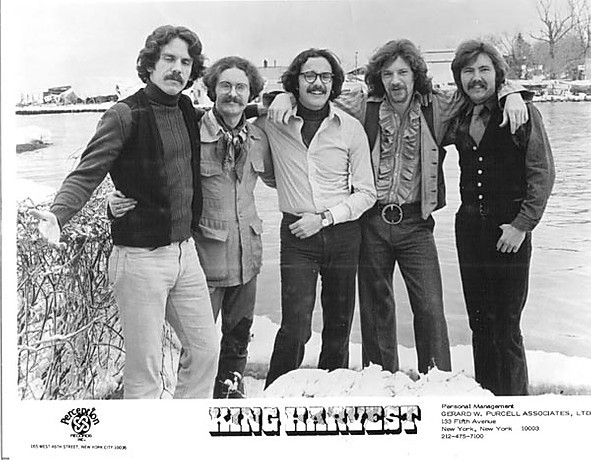 Alt text: King Harvest band members in a promotional shot from 1972, the year “Dancing in the Moonlight” became a hit, showcasing the band’s role in popularizing the song.
Alt text: King Harvest band members in a promotional shot from 1972, the year “Dancing in the Moonlight” became a hit, showcasing the band’s role in popularizing the song.
What followed was a brutal assault. While sleeping on the beach, Kelly and his girlfriend were attacked by a vicious St. Croix street gang. Kelly was brutally beaten with baseball bats by five gang members, while his girlfriend was subjected to a horrific sexual assault. In a moment of resilience, Kelly regained consciousness and fought back, his resistance and noise startling the attackers and causing them to flee.
Injured and disoriented, the couple stumbled along the shore, guided by distant lights, eventually reaching the only hospital on St. Croix. They were believed to be among the early victims of the infamous Fountain Valley Gang, a group notorious for their later devastating attack on tourists in 1972, which severely impacted St. Croix’s tourism industry for years.
Kelly’s condition was critical. He overheard doctors discussing his chances of survival, with one stating, “No, I doubt it.” Against the odds, Kelly survived. He spent days in the St. Croix hospital before returning to St. Thomas to recover at a friend’s home. Later, he returned to New York, where surgeons at New York Hospital undertook the painful process of re-breaking and resetting the bones in his face and addressing his numerous injuries.
Back home in Ithaca, New York, still suffering from pain and persistent headaches, Kelly was unable to perform but found solace in songwriting. It was during this period of convalescence, while grappling with the trauma he had endured, that the seeds of “Dancing in the Moonlight” were sown.
“I envisioned an alternate reality, the dream of a peaceful and joyous celebration of life. It was just me imagining a better world than the one I had just experienced in St. Croix,” Kelly explained.
The horrific violence he experienced became the unlikely catalyst for a song about peace, joy, and unity under the moonlight. A testament to the resilience of the human spirit, a near-death experience transformed into a song that celebrates life.
“It was amazing. People liked the song right from the start. I liked it, but I wouldn’t have predicted that it would become a big hit,” Kelly admitted.
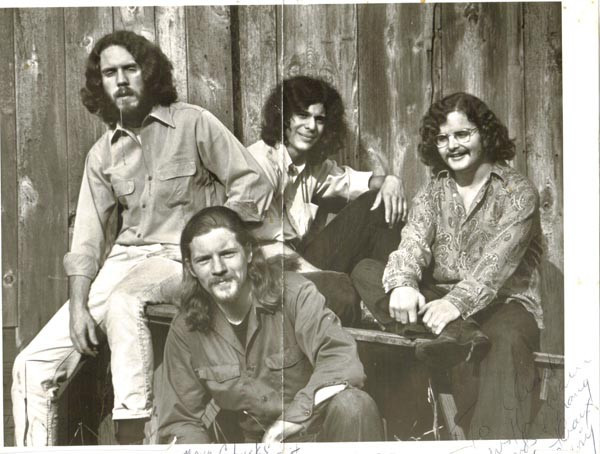 Alt text: Boffalongo band photo from around 1970, featuring Sherman Kelly and highlighting his early band and the initial recording of “Dancing in the Moonlight.”
Alt text: Boffalongo band photo from around 1970, featuring Sherman Kelly and highlighting his early band and the initial recording of “Dancing in the Moonlight.”
King Harvest wasn’t the first band to record “Dancing in the Moonlight.” In 1970, Kelly joined Boffalongo, featuring his brother Wells Kelly, Larry Hoppen, Dave “Doc” Robinson, and Peter Giansante. “Dancing in the Moonlight” appeared on Boffalongo’s 1970 album “Beyond Your Head,” with Sherman Kelly on lead vocals.
Kelly humorously critiques his own vocal performance on the Boffalongo version, describing it as “horrible.” He recounts a disastrous studio experience where producers, in a misguided attempt to enhance his performance, gave him cocaine.
“The first time I was in a recording studio for that version, we had these producers who thought it was a good idea to give me cocaine. That was probably the worst idea,” Kelly recalled. “I found myself in the vocal booth, where there were a lot of people distracting me. And the producers would give me more cocaine to keep me doing takes until my voice was so distorted and so weird.”
Despite the chaotic recording session, Boffalongo’s version became a regional hit. Another group, High Broom, also recorded the song in 1970 on Island Records, but their version didn’t chart.
When Boffalongo disbanded, Wells Kelly joined King Harvest, a French-American group based in Paris, whose lead singer was Doc Robinson, also from Boffalongo. Wells Kelly introduced “Dancing in the Moonlight” to King Harvest.
King Harvest’s rendition, featuring Robinson on lead vocals, was released as a single in 1972. It became a breakout hit, reaching No. 13 on the Billboard Hot 100, and solidified “dancing in the moonlight” as a cultural phenomenon. In the summer of 1972, King Harvest invited Sherman Kelly to tour with them. During live performances, Robinson sang lead vocals, and Sherman Kelly provided harmonies.
Kelly modestly acknowledges Robinson’s vocal abilities, quoting a critic who quipped, “As a singer, Sherman Kelly is not too bad of a songwriter.” While enjoying the initial excitement of touring and the song’s success, Kelly found the lifestyle unsustainable. He left King Harvest after just one tour.
Wells Kelly later joined forces with John Hall and Larry Hoppen to form Orleans. Orleans also recorded “Dancing in the Moonlight,” further cementing the song’s place in music history. Even today, Orleans, featuring John Hall and Larry Hoppen’s brothers, Lance and Lane Hoppen, continues to perform “Dancing in the Moonlight” in their sets, keeping the legacy alive even after Larry Hoppen’s passing in 2012.
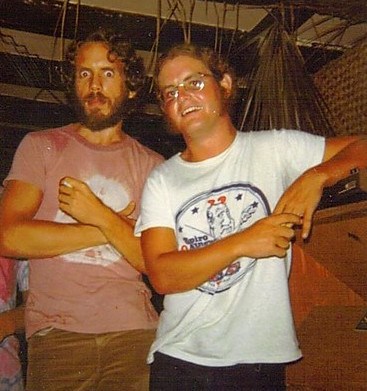 Alt text: Sherman Kelly pictured with Larry Hoppen, co-founder of Orleans, highlighting the connection between Kelly and the band that further popularized “dancing in the moonlight.”
Alt text: Sherman Kelly pictured with Larry Hoppen, co-founder of Orleans, highlighting the connection between Kelly and the band that further popularized “dancing in the moonlight.”
Sherman Kelly’s journey extends beyond the realm of music. A graduate of Cornell University with degrees in psychology and English, he pursued further studies in Paris, Switzerland, and New York City before penning “Dancing in the Moonlight.” Following the tragic death of his brother Wells in 1984, Kelly shifted his focus, earning a master’s degree in social work and psychotherapy. He dedicated many years to working as a psychotherapist until his retirement.
Despite stepping away from the forefront of the music industry, Kelly returned in 2008 with the album “Burnin’ the Candle,” featuring collaborations with his late brother Wells. “Dancing in the Moonlight” experienced a resurgence in 2000 when Toploader’s cover became a hit, introducing the song to a new generation. The song has also been featured in numerous films, television shows, and video games, including “Guardians of the Galaxy: The Telltale Signs” in 2017, demonstrating its enduring appeal and cultural relevance.
“Dancing in the moonlight,” born from darkness and pain, has become a timeless anthem of joy and escapism. Sherman Kelly’s story is a powerful reminder that even from the deepest personal traumas, beauty and hope can emerge, transforming hardship into enduring art that resonates with generations.
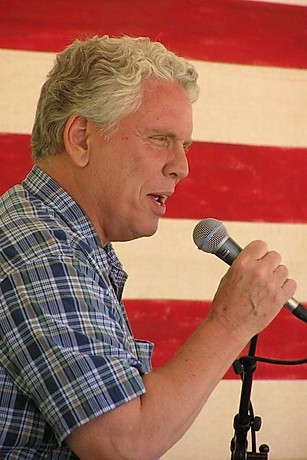 Alt text: Sherman Kelly in a recent photo, reflecting his life and career beyond “Dancing in the Moonlight” and highlighting his lasting impact on music.
Alt text: Sherman Kelly in a recent photo, reflecting his life and career beyond “Dancing in the Moonlight” and highlighting his lasting impact on music.


